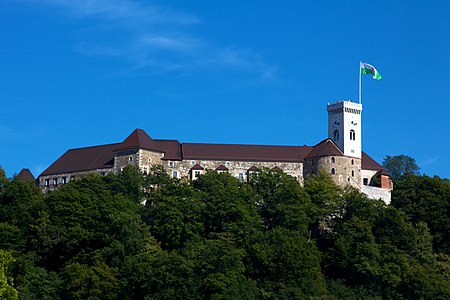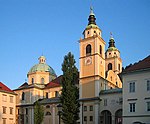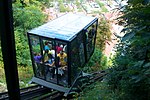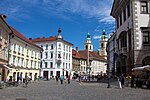Ljubljana Castle

Ljubljana Castle (Slovene: Ljubljanski grad, German: Laibacher Schloss) is a castle complex standing on Castle Hill above downtown Ljubljana, the capital of Slovenia. It is a key landmark of the town. Originally a medieval fortress, it was probably constructed in the 11th century and rebuilt in the 12th century. It acquired its present outline with an almost complete overhaul in the 15th century, whereas the majority of the buildings date to the 16th and 17th centuries. Initially a defense structure and since the first half of the 14th century the seat of the lords of Carniola, it was since the early 19th century used for various other purposes and today is used as a major cultural venue.The castle is depicted on the city's coat of arms, along with a dragon on top.
Excerpt from the Wikipedia article Ljubljana Castle (License: CC BY-SA 3.0, Authors, Images).Ljubljana Castle
Ovinki, Ljubljana Trnovo
Geographical coordinates (GPS) Address Website External links Nearby Places Show on map
Geographical coordinates (GPS)
| Latitude | Longitude |
|---|---|
| N 46.048888888889 ° | E 14.508333333333 ° |
Address
Ljubljanski grad
Ovinki
1104 Ljubljana, Trnovo
Slovenia
Open on Google Maps










